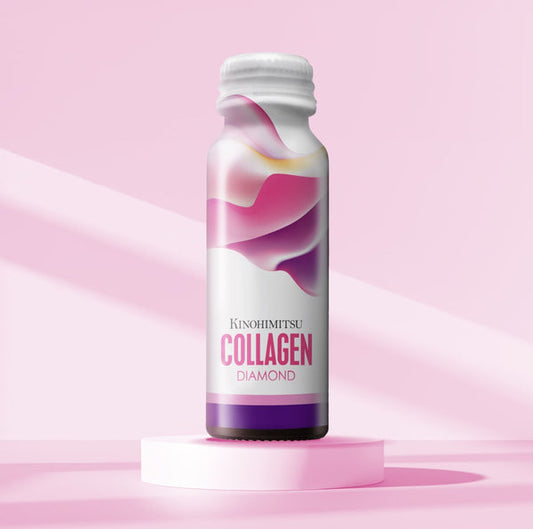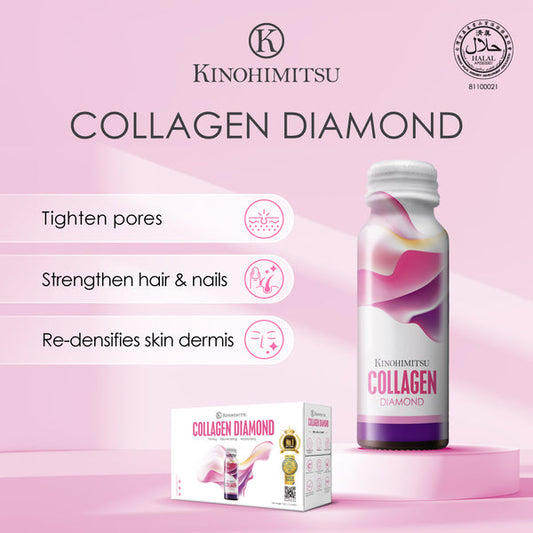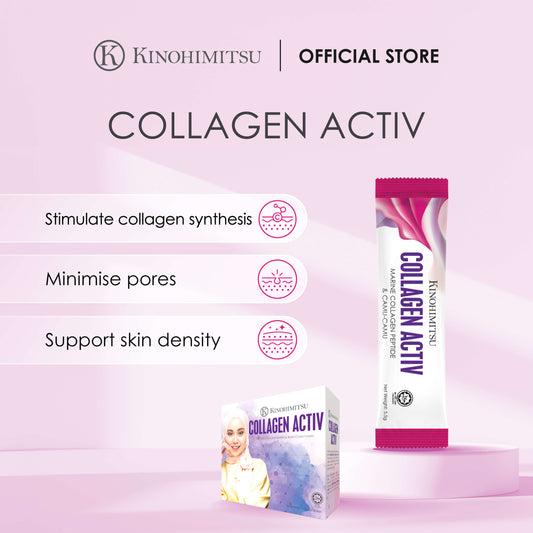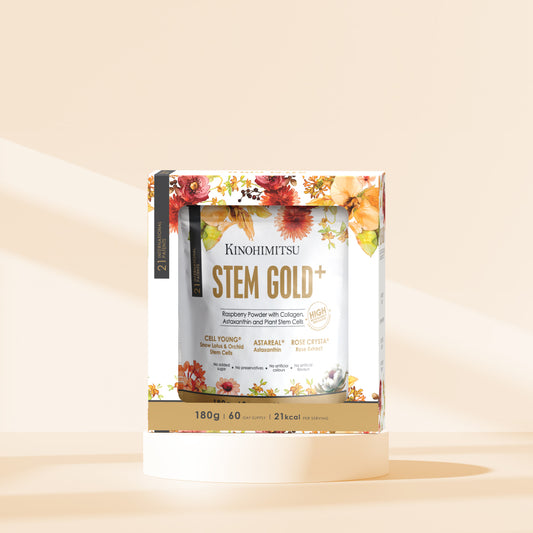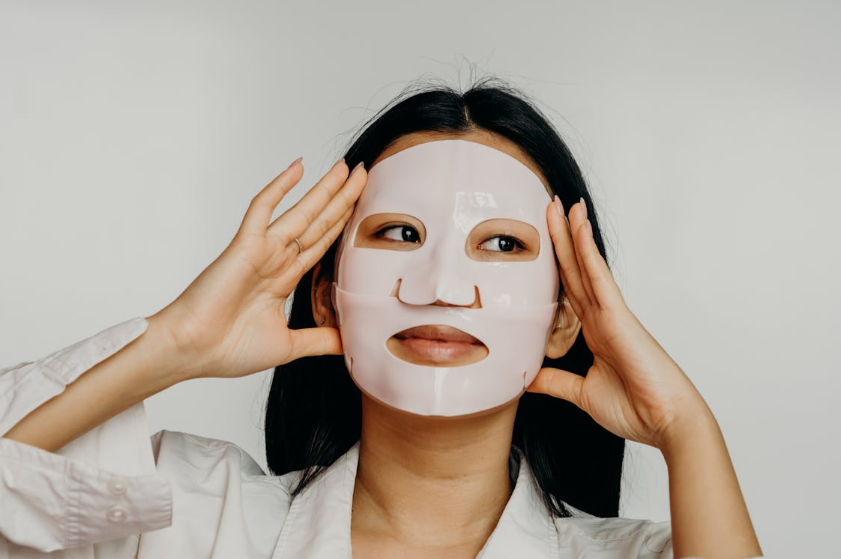
Unlock Radiance: Best Whitening Mask Tips

Did you know that the global skincare market is projected to reach $189.3 billion by 2025, with the demand for products like the whitening mask rapidly increasing? For many seeking a brighter, more even complexion, whitening masks have become essential tools in their beauty arsenal. These specialized masks are designed to combat hyperpigmentation, dark spots, and dull skin, unleashing the skin's natural radiance. Whether you're dealing with sun damage, acne scars, or the effects of aging, the right whitening mask can help restore your skin's glow and boost your confidence. However, with so many options available, understanding how to choose and use these masks effectively is crucial for achieving the desired results. In this guide, we'll explore everything you need to know about whitening masks, from selecting the perfect formulation for your skin type to mastering the application process.
Understanding the Importance of a Whitening Mask
The Role of Brightening Skincare in Your Routine
In today’s beauty landscape, a whitening mask has become a staple for those seeking radiant and even-toned skin. These masks are specifically formulated to address hyperpigmentation, dark spots, and dullness, playing a crucial role in enhancing your overall skincare regimen.
Key Ingredients to Look for in a Whitening Mask
When shopping for a whitening mask, it’s essential to understand the active ingredients that can significantly improve your skin’s brightness. Some key ingredients to consider include:
- Vitamin C: Known for its antioxidant properties, this vitamin helps to brighten the skin and reduce melanin production.
- Niacinamide: This form of Vitamin B3 is effective in improving skin tone and texture while minimizing pores.
- Kojic Acid: Derived from mushrooms, kojic acid is a popular ingredient for its skin-lightening effects.
- Licorice Extract: This natural ingredient helps to inhibit melanin synthesis, leading to a more uniform skin tone.
Benefits of Using a Whitening Mask Regularly
Incorporating a whitening mask into your skincare routine offers numerous benefits:
- Reduces the appearance of dark spots and blemishes.
- Enhances skin's overall brightness and radiance.
- Provides hydration while nourishing the skin.
- Supports even skin tone for a smoother complexion.
Choosing the Right Whitening Mask for Your Skin Type
Identifying Your Skin Type
Before you make a purchase, it’s crucial to identify your skin type to choose the most suitable whitening mask. Each skin type reacts differently to various ingredients.
Recommended Whitening Masks for Oily Skin
If you have oily skin, look for masks with clay or charcoal to help absorb excess oil while offering whitening benefits. Masks enriched with salicylic acid can also be beneficial.
Recommended Whitening Masks for Dry Skin
For dry skin types, opt for creamy masks that include ingredients like hyaluronic acid or glycerin. These will provide hydration along with whitening properties.
Recommended Whitening Masks for Sensitive Skin
If you have sensitive skin, choose a whitening mask that is hypoallergenic and free from harsh chemicals. Look for soothing ingredients like aloe vera or chamomile.
DIY Whitening Masks: Natural Alternatives
Top Natural Ingredients for a Whitening Mask
If you prefer natural solutions, consider using these ingredients in your DIY whitening masks:
- Yogurt: Contains lactic acid, which gently exfoliates the skin.
- Honey: A natural humectant that hydrates while providing antibacterial properties.
- Lemon Juice: Known for its brightening effects due to citric acid but should be used with caution on sensitive skin.
Simple Recipes for Homemade Whitening Masks
Here are two easy DIY whitening mask recipes:
- Yogurt and Honey Mask: Mix 2 tablespoons of yogurt with 1 tablespoon of honey. Apply for 15-20 minutes and rinse off for radiant skin.
- Lemon and Aloe Vera Mask: Combine the juice of half a lemon with 2 tablespoons of aloe vera gel. Apply for 10-15 minutes, then rinse off, but avoid direct sun exposure post-application.
Potential Risks and Precautions
While DIY masks can be beneficial, always perform a patch test to avoid allergic reactions, especially when using acidic ingredients like lemon juice.
For further reading on the effects of Vitamin C in skincare, you can visit Clinique, a reputable source of beauty information.
How to Apply a Whitening Mask Effectively
Preparation: Cleanse and Exfoliate
Before applying any whitening mask, it's essential to prepare your skin properly. Start with a gentle cleanser to remove dirt and impurities. Follow this with an exfoliation step to slough off dead skin cells, enhancing the mask's penetration and effectiveness. This can be done using:
- A gentle scrub
- An exfoliating chemical peel (like those containing AHAs or BHAs)
Application Techniques for Maximum Absorption
Applying a whitening mask correctly can significantly influence the outcome. Here are some tips for optimal application:
- Use Clean Hands or a Brush: Always ensure your hands are clean or use a brush to apply the mask to keep it hygienic.
- Target Problem Areas: Focus on areas with hyperpigmentation or discoloration, but apply a thin layer evenly across your face.
- Avoid Sensitive Areas: Be cautious around your eyes and mouth, as these areas can be more sensitive.
Recommended Duration for Mask Application
Each whitening mask may have specific instructions regarding application time, but as a general rule:
- Sheet masks: 15-20 minutes
- Clay or cream masks: 10-30 minutes depending on the formula
Always adhere to the guidelines indicated on the product packaging to prevent irritation.
Post-Application Care
After removing your whitening mask, rinse your face with lukewarm water to wash away any residue. Following this:
- Moisturize: Apply a hydrating moisturizer to lock in moisture.
- Apply SPF: If used during the day, always apply sunscreen, as some whitening ingredients can increase your skin's sensitivity to UV rays.
Incorporating a whitening mask into your routine can be immensely rewarding when done properly. For more tips on effective skincare routines, visit Neutrogena, a leading brand in skin health and care.
DIY Whitening Masks: Natural Alternatives
Top Natural Ingredients for a Whitening Mask
Creating a DIY whitening mask can be an enjoyable and effective way to achieve a more radiant complexion. Here are some powerhouse natural ingredients you might consider incorporating into your masks:
- Yogurt: Rich in lactic acid, yogurt acts as a gentle exfoliant, helping to brighten and hydrate the skin.
- Oatmeal: Known for its soothing properties, oatmeal can calm irritated skin while providing a mild exfoliating effect.
- Turmeric: This spice contains curcumin, which has brightening and anti-inflammatory properties, making it a perfect addition to your whitening mask.
- Cucumber: Refreshing and hydrating, cucumber helps to soothe the skin and reduce puffiness, contributing to an even skin tone.
Simple Recipes for Homemade Whitening Masks
Here are two easy and effective recipes for homemade whitening masks that showcase these natural ingredients:
1. Yogurt and Turmeric Mask:
- Ingredients: 2 tablespoons of yogurt and a pinch of turmeric powder.
- Instructions: Mix the yogurt and turmeric until well combined. Apply to your face and leave it on for about 15-20 minutes before rinsing with lukewarm water. This mask helps lighten dark spots and provides a refreshing feel.
2. Oatmeal and Cucumber Mask:
- Ingredients: 2 tablespoons of ground oatmeal and 1/2 of a finely grated cucumber.
- Instructions: Combine the oatmeal with the grated cucumber. Apply the mixture to your face and let it sit for about 20 minutes before rinsing. This mask not only brightens the skin but also calms irritation.
Potential Risks and Precautions
While DIY whitening masks can be beneficial, there are essential considerations to keep in mind:
- Patch Test: Always perform a patch test on a small area of skin before using any new ingredients, especially for those with sensitive skin.
- Avoid Overuse: Using natural masks too frequently can lead to skin irritation. Aim for 1-2 times a week.
- Sun Sensitivity: Some ingredients, like lemon juice, can make the skin more sensitive to sunlight. Always follow up with sunscreen if using such ingredients.
For more guidance on creating safe and effective homemade skincare remedies, you can visit Kinohimitsu, a trusted name in natural health and beauty solutions.
Incorporating a Whitening Mask into Your Skincare Routine
Frequency of Use for Best Results
Consistency is key when using a whitening mask, but finding the right frequency is essential to avoid skin irritation. Depending on your skin type and the specific product you choose, here's a general guideline:
- Normal to Oily Skin: Use 2-3 times a week.
- Dry or Sensitive Skin: Limit to once a week to prevent excessive dryness or irritation.
- Targeted Treatment: For severe hyperpigmentation, consider using a whitening mask more frequently in the short term, but always monitor your skin's reaction.
Combining with Other Skincare Products
To enhance the effects of your whitening mask, consider integrating it into a broader skincare regimen. Here are some compatible products to combine with your whitening mask:
- Cleansers: Use a gentle, exfoliating cleanser before applying your mask to maximize absorption.
- Serums: Follow up with serums that contain Vitamin C or niacinamide after your mask to amplify brightening effects.
- Moisturizers: Always apply a hydrating moisturizer post-mask to lock in moisture and prevent dryness.
Signs to Watch For: When to Stop Usage
It’s crucial to listen to your skin and recognize when a whitening mask may not be suitable for you. Look for these signs:
- Redness or Irritation: If you experience prolonged redness or irritation, discontinue use immediately.
- Excessive Dryness or Peeling: If your skin becomes excessively dry or begins to peel, it may indicate that the mask is too strong for your skin type.
- Breakouts: If using a whitening mask leads to increased breakouts or skin congestion, it might not be the right choice for your skin.
Adjusting your skincare routine based on your skin's reactions will help you achieve the best results. For more tips on skincare products and routines, visit Dermalogica, a leading authority in professional skincare.
Additional Tips for Achieving Radiant Skin
Hydration and Nutrition for Glowing Skin
Achieving radiant skin goes beyond the use of a whitening mask; it encompasses a holistic approach that includes proper hydration and nutrition. Here are some essential tips:
1. Drink Plenty of Water: Staying hydrated is crucial for maintaining skin elasticity and glow. Aim for at least 8 glasses of water a day.
2. Nutritious Diet: Incorporate foods rich in antioxidants, such as fruits and vegetables, to combat oxidative stress. Consider including:
- Berries: Packed with antioxidants that help repair skin damage.
- Leafy Greens: Provide essential vitamins and minerals for skin health.
- Nuts and Seeds: Rich in healthy fats that support moisture retention.
The Role of Sun Protection
Using a whitening mask may make your skin more sensitive to the sun. Therefore, sun protection should be a cornerstone of your skincare routine. Here are some sun safety tips:
- Apply Sunscreen Daily: Use a broad-spectrum sunscreen with at least SPF 30, even on cloudy days.
- Reapply Regularly: Sunscreen should be reapplied every two hours, or more often if swimming or sweating.
- Seek Shade: Whenever possible, stay in the shade, especially during peak sun hours (10 AM to 4 PM).
Lifestyle Changes for Long-term Skin Health
Incorporating a few lifestyle changes can yield significant benefits for your skin. Consider the following:
- Get Enough Sleep: Aim for 7-9 hours per night to facilitate skin repair and regeneration.
- Manage Stress: High-stress levels can exacerbate skin issues, including pigmentation. Activities like yoga or meditation can help mitigate stress.
- Avoid Smoking and Limit Alcohol: These habits can lead to premature aging and dull skin.
By integrating these tips with your use of a whitening mask, you can enhance your skin's radiance and overall health. For more detailed skincare advice, feel free to explore The Body Shop, renowned for its commitment to natural beauty and wellness.
Conclusion: Embrace Your Journey to Radiance

Summary of Key Points
In your pursuit of achieving radiant and even-toned skin, incorporating a whitening mask into your skincare routine can be immensely beneficial. Here are the key points to remember:
- Understanding Ingredients: When choosing a whitening mask, look for powerful ingredients like Vitamin C, niacinamide, and licorice extract.
- Proper Application: Ensure your skin is clean and exfoliated before applying the mask, and follow the recommended duration to avoid irritation.
- DIY Alternatives: Natural alternatives like yogurt, turmeric, and oatmeal can provide effective whitening benefits without harsh chemicals.
- Consistency is Key: Use your whitening mask regularly, but adjust frequency based on your skin type and responses.
- Holistic Approach: Complement your mask with hydration, sun protection, and a balanced diet for the best results.
Encouragement to Experiment with Different Whitening Masks
Remember, each person’s skin is unique, and what works for one may not work for another. Don’t hesitate to experiment with different whitening masks—whether store-bought or DIY—to find what resonates best with your skin. Keep track of your skin’s response, and adjust your routine as needed.
For more tips and insights on enhancing your skincare journey, you can visit Clinique, a reputable brand known for its science-backed skincare products.
Understanding the Risks and Considerations of Whitening Masks
Potential Side Effects
While whitening masks can offer numerous benefits for skin brightening, it's essential to be aware of potential side effects. Here are some common issues that may arise:
- Skin Irritation: Some individuals may experience redness, itching, or a burning sensation, particularly with masks that contain strong ingredients like hydroquinone or certain acids.
- Dryness or Peeling: Overuse of whitening masks can lead to excessive dryness or peeling, especially if your skin is already dry or sensitive.
- Allergic Reactions: Ingredients in a whitening mask may cause allergic reactions in some people, resulting in rashes or severe irritation.
Precautions to Take
To minimize the risk of adverse effects when using a whitening mask, consider the following precautions:
- Patch Testing: Conduct a patch test on a small area of skin before applying the mask to your entire face. This helps identify any potential allergic reactions.
- Use as Directed: Always follow the manufacturer's instructions regarding frequency and duration of use to avoid overexposure.
- Monitor Your Skin: Pay close attention to how your skin responds after using the mask. If you notice any irritation or discomfort, discontinue use immediately.
When to Consult a Dermatologist
If you experience persistent or severe reactions, it’s crucial to consult a dermatologist. They can provide professional advice tailored to your skin type and help you choose suitable products.
For further information on skincare best practices and to explore various skin-safe products, visit CeraVe, a trusted brand recommended by dermatologists for its effective formulations.
What is a whitening mask?
A whitening mask is a skincare product specifically formulated to brighten the skin and reduce the appearance of dark spots and hyperpigmentation. These masks typically contain active ingredients such as Vitamin C, kojic acid, niacinamide, or licorice extract, which work together to inhibit melanin production and promote a more even skin tone.
How often should I use a whitening mask?
The frequency of using a whitening mask depends on your skin type and the specific product you choose. Generally, individuals with normal to oily skin can use a whitening mask 2-3 times a week, while those with dry or sensitive skin should limit usage to once a week to prevent irritation. Always follow the manufacturer's recommendations for optimal results.
Can I use a whitening mask if I have sensitive skin?
Yes, you can use a whitening mask if you have sensitive skin, but it's crucial to select products specifically designed for sensitive skin types. Look for masks that are fragrance-free, hypoallergenic, and contain gentle, soothing ingredients. Additionally, perform a patch test before applying the mask to your entire face to ensure there is no adverse reaction.
Are DIY whitening masks effective?
DIY whitening masks can be effective for some individuals, especially when using natural ingredients known for their brightening properties, such as yogurt, honey, and turmeric. However, results may vary depending on individual skin types and the specific ingredients used. It's important to do thorough research and patch test any DIY recipes to avoid irritation.
What should I do if my skin reacts negatively to a whitening mask?
If your skin experiences irritation, redness, or any other adverse reactions after using a whitening mask, discontinue use immediately. Rinse your face with lukewarm water and apply a soothing moisturizer or aloe vera gel to calm the skin. If symptoms persist or worsen, consult a dermatologist for professional advice and treatment.

